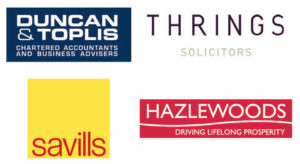Business Clinic: VAT implications of diversification plans
 © Rex/Shutterstock
© Rex/Shutterstock There’s a lot to get right when you’re starting a diversification. Lisa Oliver, associate director with accountant Hazlewoods, runs through some essential business structure considerations and outlines common VAT issues which arise when a farm diversifies.
Deciding on the most suitable business structure can take time as there is a lot to consider, including not only tax but also the aims and ambitions of family members.
Business structure and VAT
The simplest approach may be to include the diversification project within the current farming business.
The main advantage of this structure is simplicity as all income and expenses will go through the existing farming business under one VAT registration with no need for a further set of accounts.
If the farming business is VAT-registered and the diversification project results in exempt supplies, such as assured shorthold tenancy rental income, then the farming business will become partially exempt for VAT purposes.
This means that partial exemption calculations will need to be considered, which may mean input VAT on setup costs are irrecoverable if the de minimis limits are breached (see ‘What are deminimis rules’, right).
What are deminimis rules?
The deminimis rules allow VAT relating to exempt supplies to be recovered provided it amounts to less than £625 a month and is less than 50% of the input tax incurred in the VAT accounting period.
If the farming business is VAT-registered and the diversification project results in standard rated supplies, for example, a glamping site on the farm, all input VAT on the set up and running costs will be recoverable.
The main disadvantage of this structure is, regardless of the turnover relating to the diversification project, output VAT will need to be charged at 20% on the glamping fees. This will have to absorbed by the business as a cost if customers are not able to recover this VAT.
If the diversification project results in standard rated supplies and it is expected that the initial turnover of the new project is likely to be below the compulsory VAT registration threshold of £85,000/year then it may be beneficial to set up as a separate trading entity so that VAT will not have to be charged to customers.
The separate entity could be a sole trade, partnership or a limited company depending on the taxable income of the business owners, the anticipated profit of the project and the amount of capital tied up in the business.
A separate entity would also provide the opportunity for other family members or third parties to be involved in the business and give them the opportunity of running their own business separate from the family farm.
A further advantage of a limited company is it provides protection for the owners which, depending on the nature of the business, may be highly desirable.
The disadvantages of setting up a separate non-VAT registered entity would be the extra administration such as separate accounting records, a different bank account and an additional set of accounts. Also, input VAT would not be recoverable on the initial set-up costs and subsequent running costs.
Tax
If the existing farm business is a partnership and all farm partners are higher rate tax payers and the profits from the diversification project are likely to be reinvested in the business rather than being drawn, then it may be beneficial for the new project to trade as a limited company.
All profits would be taxable at 19% and there would be no national insurance costs if profits are not extracted from the company.
If the diversification project is included within the existing farming business then this may mean that diversification losses on start-up can be offset against farming income.
However, it is important to understand the ability to do this may be limited by what is known as sideways loss restrictions if the diversification is regarded by HMRC as being a separate trade to the farming activities.
Likewise, if the farming business has not made a profit before capital allowances in the past five years, then any farming losses will not be able to be offset sideways against the diversification profits.
Diversification profits not classed as farming will also need to be excluded from any farmers’ averaging calculations.
If the farming business trades as a sole trader or partnership, and the new project is set up as a limited company, sideways loss relief would not be applicable at all.
If the current farming business makes a taxable loss this will have to be carried forward against future farming profits, and any profits in the company would be taxable and suffer tax at the rate of corporation tax (19% for 2018-19).
Key points – structure and VAT
- Getting the correct structure is important for VAT and income or corporation tax reasons
- Running a diversification as a separate business to the farming concern could have family and structural advantages
- Corporation (company) tax rates are much lower than personal tax rates but this structure brings other obligations
- In some cases, profits from the farming or diversification can be offset against the losses of the other
- Take advice to check the tax implications of your diversification plans
Do you have a question for the panel?
 Outline your legal, tax, finance, insurance or farm management question in no more than 350 words and Farmers Weekly will put it to a member of the panel. Please give as much information as possible.
Outline your legal, tax, finance, insurance or farm management question in no more than 350 words and Farmers Weekly will put it to a member of the panel. Please give as much information as possible.
Send your enquiry to Business Clinic, Farmers Weekly, RBI, Quadrant House, The Quadrant, Sutton, Surrey SM2 5AS.
You can also email your question to fwbusinessclinic@rbi.co.uk.
